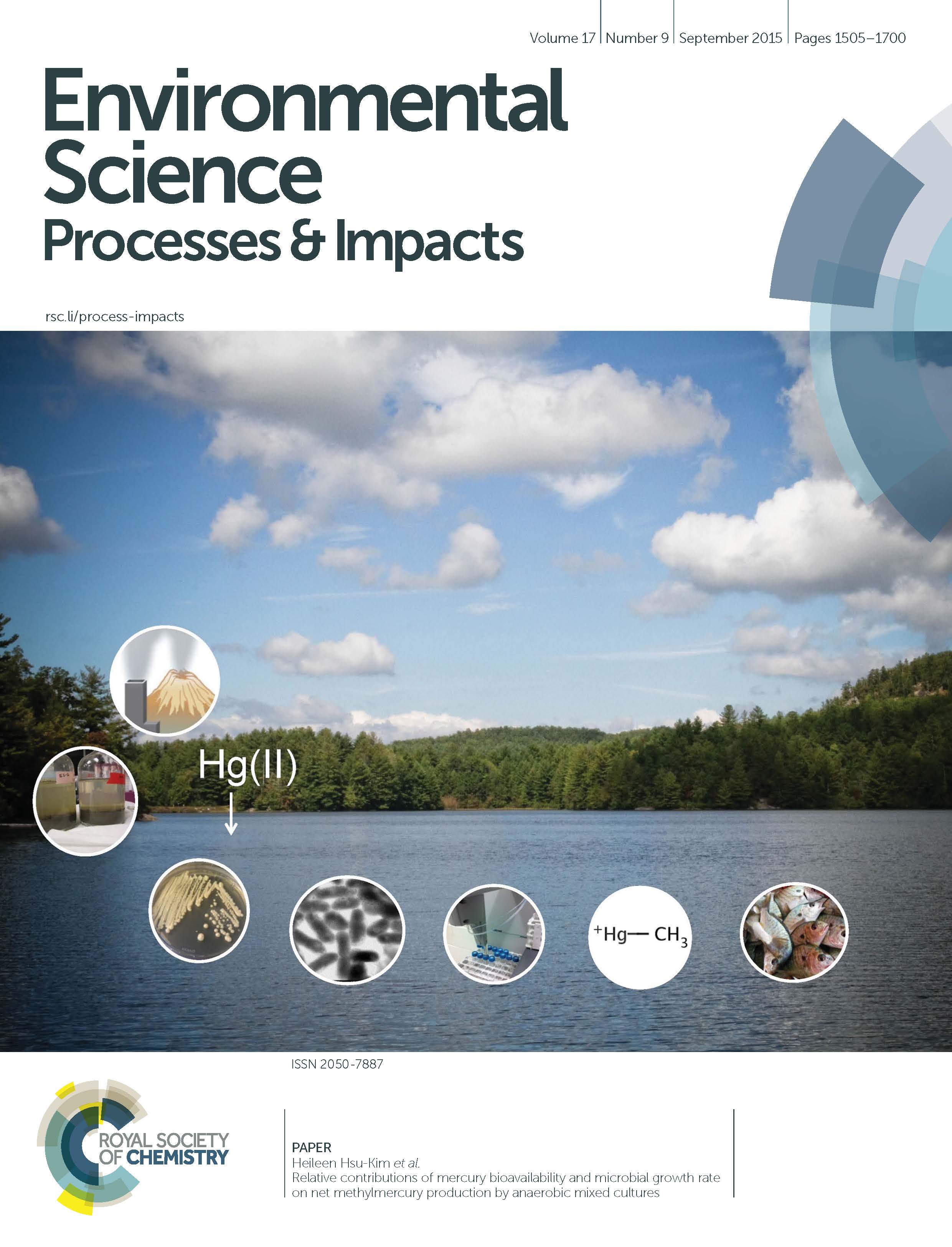
Environmental Science: Processes & Impacts cover highlights this research (issue 9)
Monomethylmercury (MeHg) is a chemical of great concern due to its neurotoxic nature and its efficient bioaccumulation in aquatic systems, eventually reaching humans through fish consumption.
MeHg is produced by the action of bacteria that transform the most commonly found species of mercury in aquatic environments. Remediation of mercury-contaminated sites requires insight into factors that facilitate the action of these mercury methylators. For example, anaerobic conditions and relatively large quantities of total and dissolved organic carbon both enhance production of MeHg.
The original speciation of mercury is also important, as some forms of mercure are more bioavailable to mercury methylators than others. Past work has traditionally focused on the influence of these factors individually; however, under environmental conditions these factors likely work in concert to affect mercury methylation.
Kucharzyk and co-workers at Duke University take the next step forward with their recent study published in Environmental Science: Processes & Impacts which aims to assess the relative influence of microbial productivity and mercury speciation on MeHg production. The researchers enriched cultures of mercury methylating bacteria found in two different marine sediments containing similar, elevated mercury concentrations. The cultures were determined to contain mostly one type of anaerobic bacteria known to methylate mercury.
For each of the two cultures, microbial growth was varied by adding different amounts of carbon substrate, and mercury speciation was varied with the addition of either dissolved or nanoparticulate mercury. The cultures were then incubated for 64 hours, during which two or three replicates were analyzed for various chemical and biological parameters at several time points across the incubation period.
In both cultures, mercury methylation increased with increasing concentrations of carbon substrate for a given type of mercury. When carbon substrate concentration was kept constant, the percentage of mercury that was methylated was 3 to 4 times lower in cultures amended with nanoparticulate mercury relative to those containing dissolved mercury instead. This could not have been due to differences in bacterial growth rates as the observed cell growth was the same across both types of added mercury, implying that the differences are probably a result of lower bioavailability of nanoparticulate mercury versus dissolved mercury.
The differences in microbial productivity between cultures spiked with the two different types of mercury became smaller with decreasing levels of carbon substrate. Interestingly, this data suggest there may be a threshold in the activity of mercury methylating bacteria, below which net MeHg production is controlled by the availability of carbon substrate, and above which the bioavailability of mercury becomes more important. However, further study including lower levels of carbon substrate is required to better confirm the existence of this threshold in microbial methylation activity.
Click on the link below to read the full article for free*:
Relative contributions of mercury bioavailability and microbial growth rate on net methylmercury production by anaerobic mixed cultures
Katarzyna H. Kucharzyk, Marc A. Deshusses, Kaitlyn A. Porter and Heileen Hsu-Kim
Environ. Sci.: Processes Impacts, 2015, 17, 1568-1577
DOI: 10.1039/C5EM00174A
—————-

About the webwriter
Abha Parajulee is a Ph.D. student at the University of Toronto Scarborough. She is interested in water resources and the behavior of organic contaminants in urban environments.
—————-
* Access is free until 18/11/2015 through a registered RSC account.










